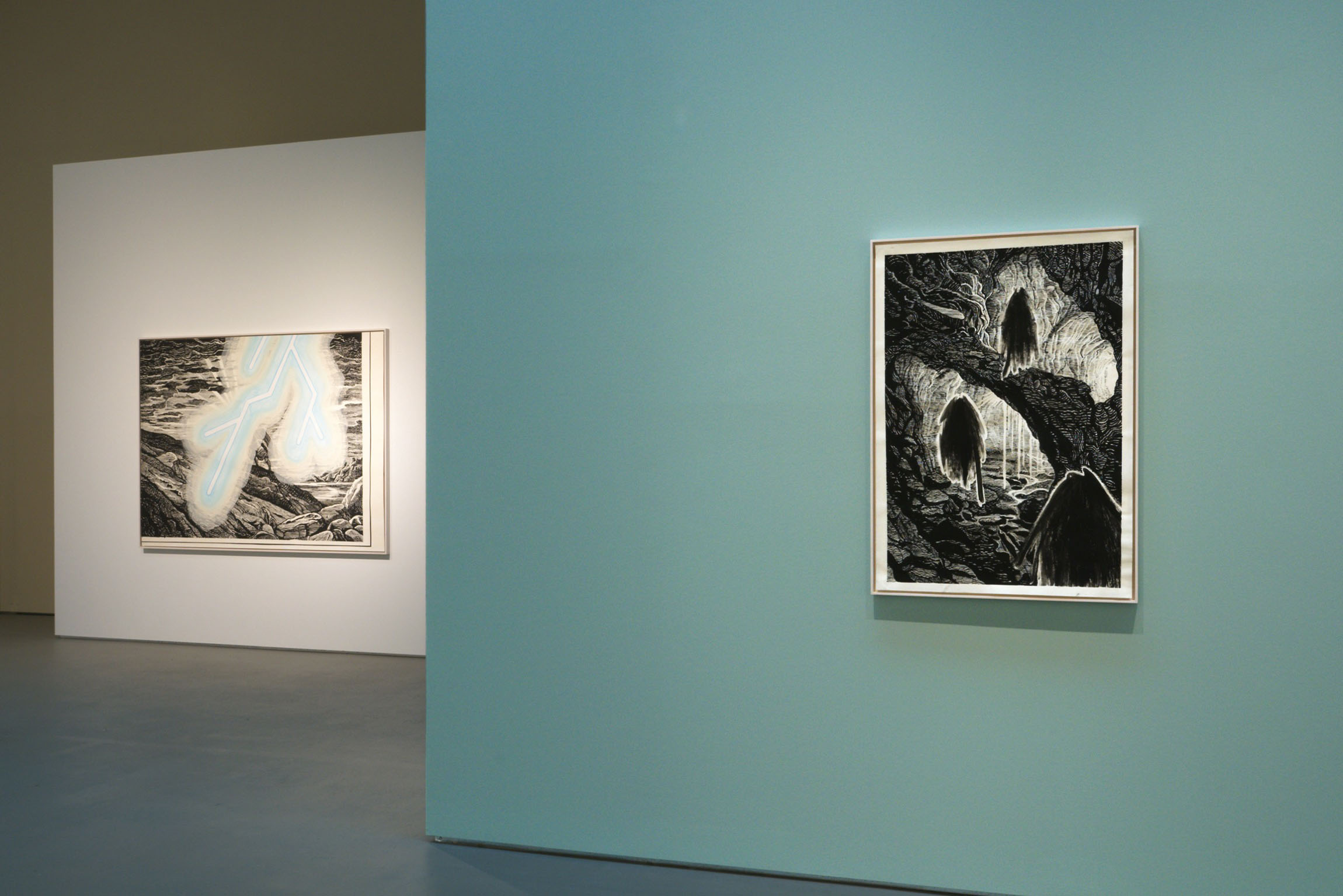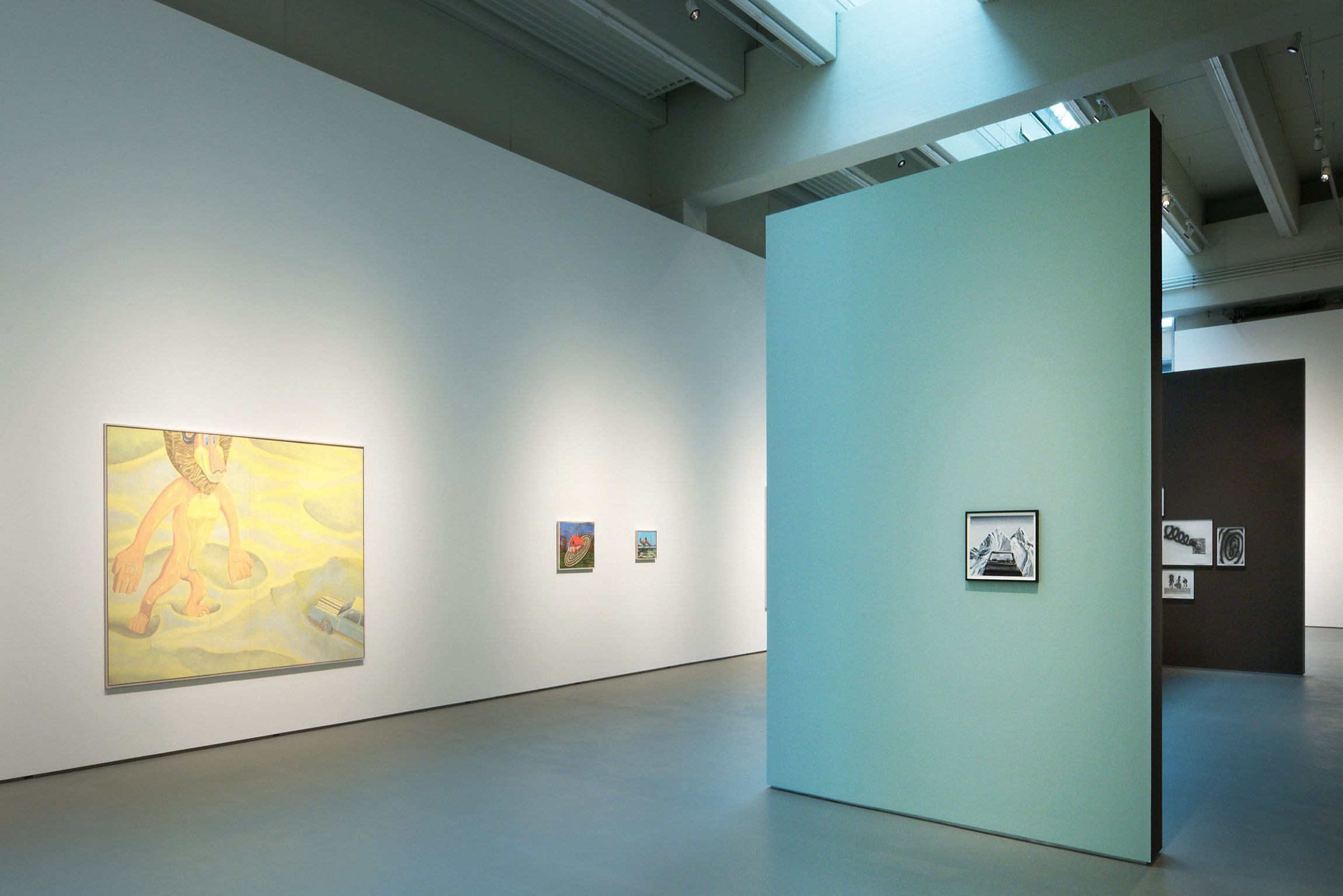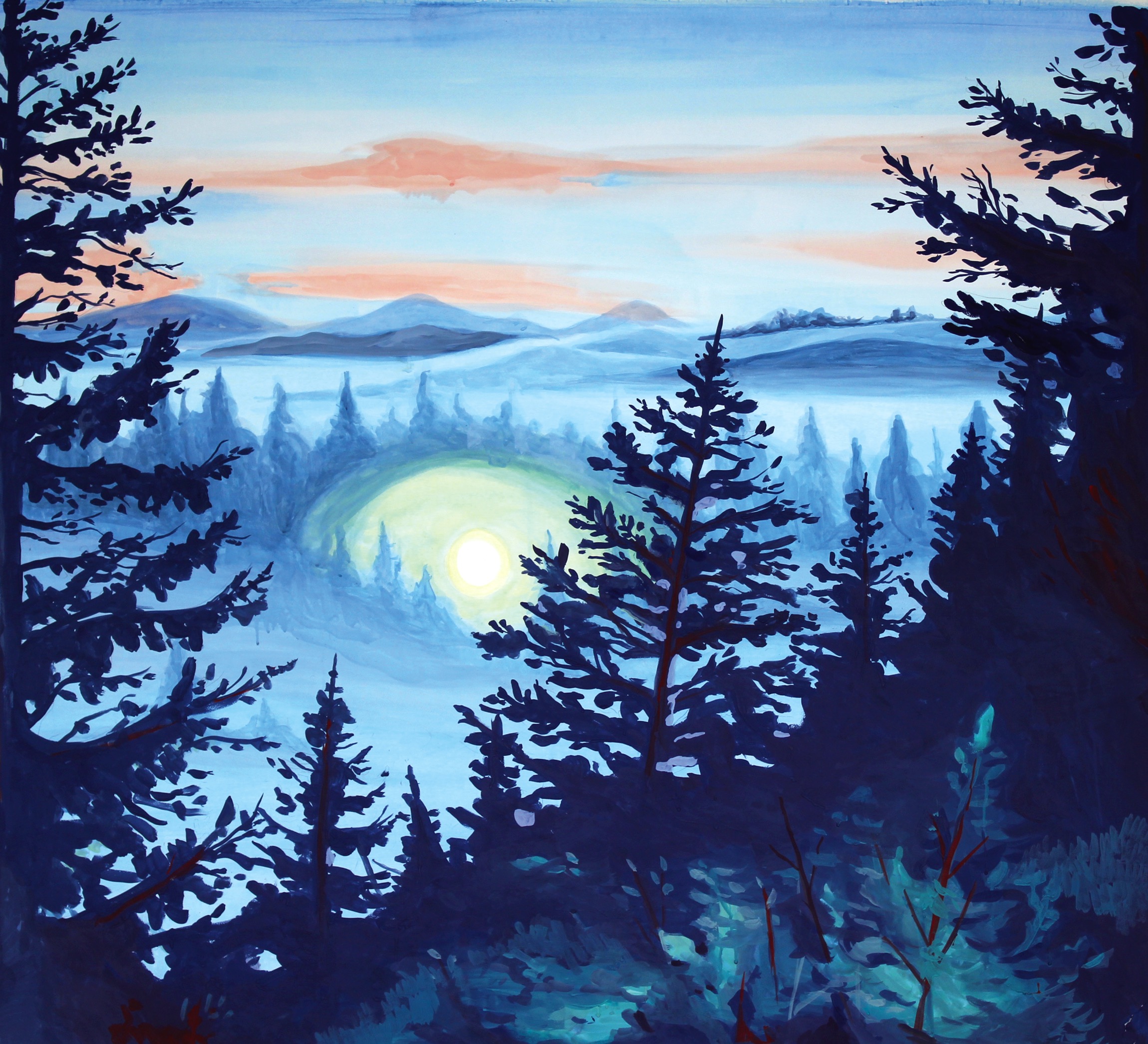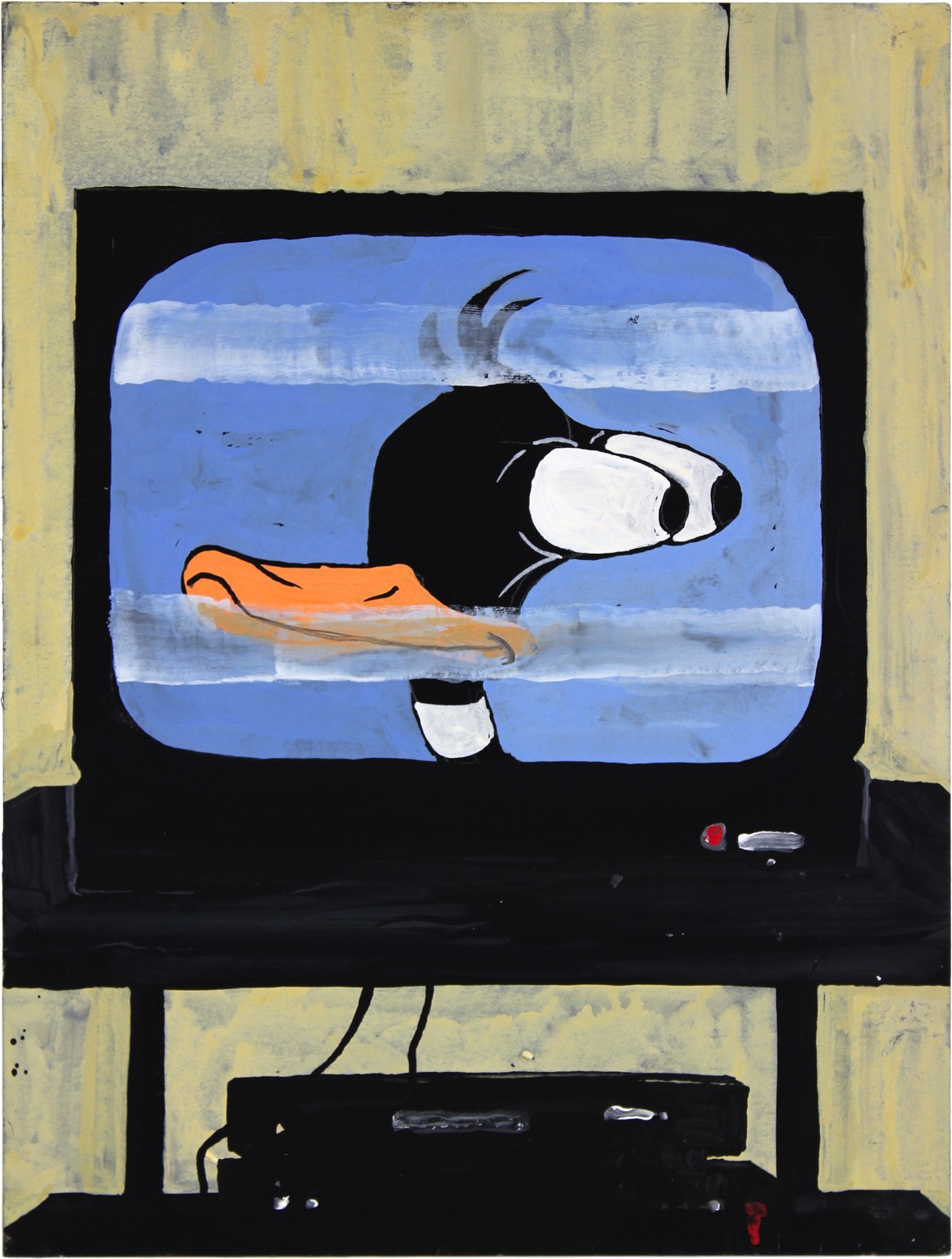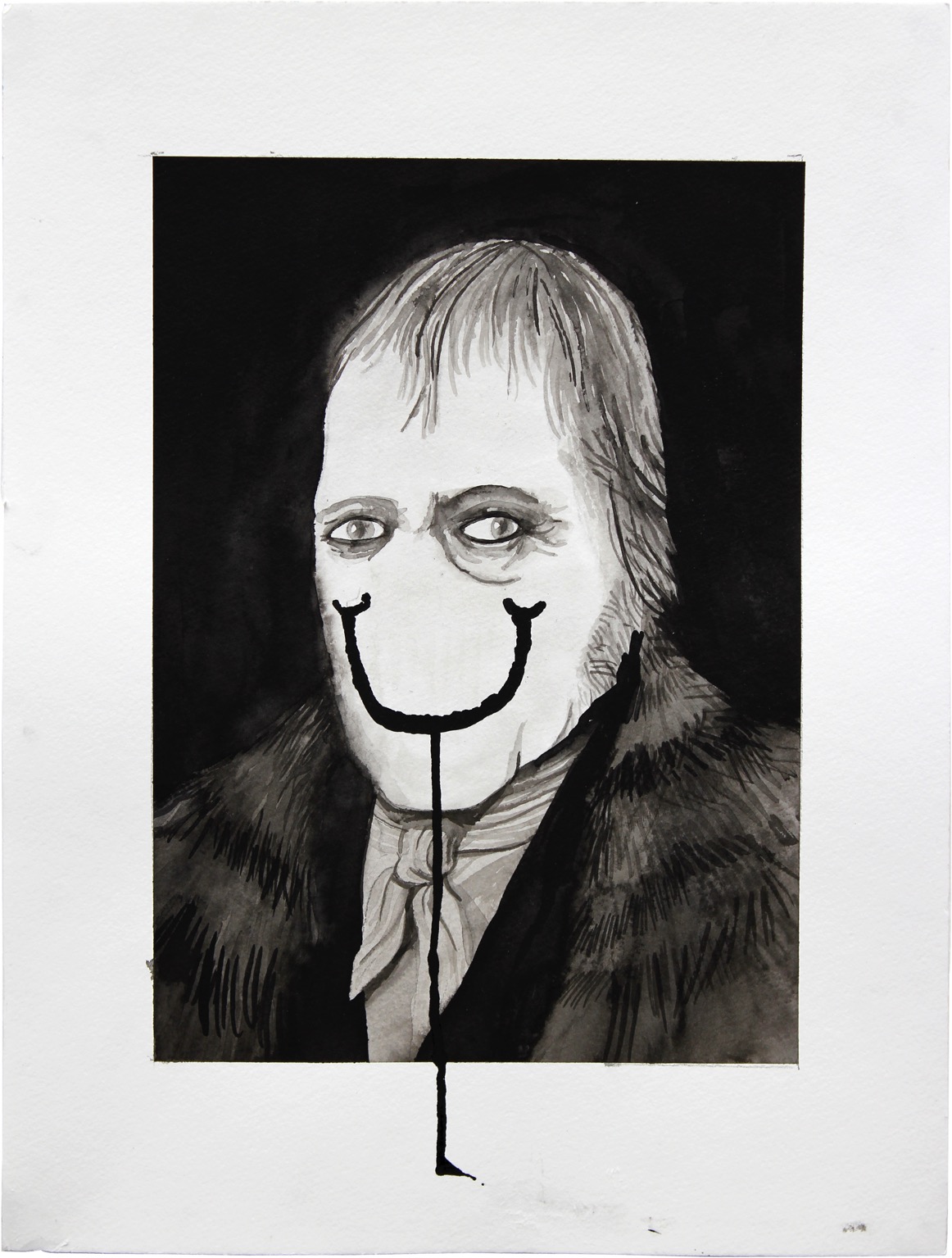Edouard Baribeaud
Hic sunt leones
Works

The Thing
2012
Gouache on paper
149 × 164 cm

Hic sunt leones
2011
Gouache on paper
178 × 245 cm
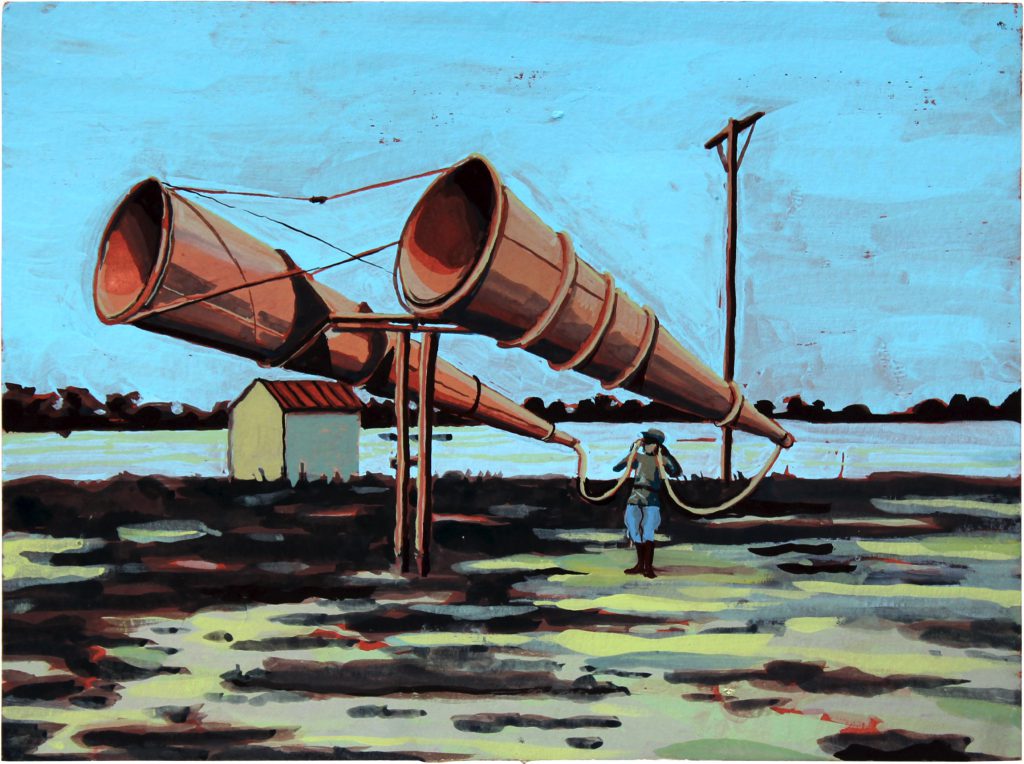
Sternenhorchen
2011
Gouache on paper
31 × 41 cm
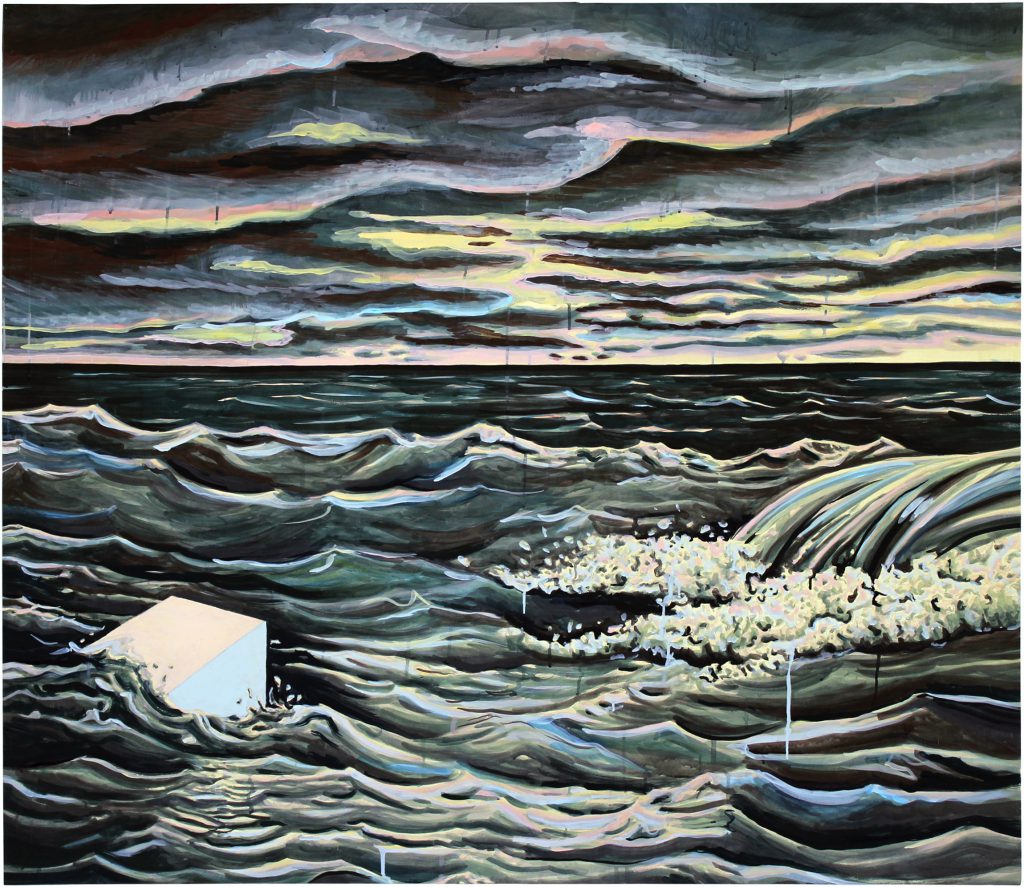
Ruines
2011
Gouache on paper
143 × 166 cm

Tropenkrankheit
2011
Gouache on paper
124 × 166 cm

Abyme
2011
Gouache on paper
31 × 41 cm


Monster
2011
Gouache on paper
41 × 31 cm

Sternenhorchen II
2011
Gouache on paper
41 × 31 cm

Unheimat
2011
Gouache on paper
31 × 41 cm

Hegel se fait tirer le portrait
2011
Tusche on paper
41 × 31 cm

Botanique hégélienne
2011
Tusche, spray paint and gouache on paper
50 × 65 cm

Les larmes de Hegel
2011
Tusche and gouache on paper
41 × 31 cm

Et l’État fut
2011
Tusche and gouache on paper
31 × 41 cm

Où Platon arrête son char
2011
Tusche and gouache on paper
31 × 41 cm

Un flagrant délit de vagabondage
2011
Tusche and gouache on paper
31 × 41 cm

L’absolu mis en bouteille
2011
Tusche on paper
50 × 65 cm

Bal masqué
2011
Tusche on paper
31 × 41 cm
Text
Hic sunt leones – the Latin title of Edouard Baribeaud’s exhibition means “Here are the lions.” This was a phrase used by the Romans to indicate unexplored territory on their ocean and land maps. And reoccurring themes in Baribeaud’s work are the foreign, the unexplored, and the notion of home. Both the work and the ideas of the 27-year-old artist have been shaped by his dual cultural identity. The son of a French father and German mother, he grew up in France and attended the renowned École nationale supérieure des Arts Décoratifs, where he trained as a book illustrator. He has been living in Berlin since 2010 and within a short period of time produced a number of prolific series of works on paper.
Baribeaud has a playful command of all the classical techniques (ink, watercolor, gouache) and likes to combine them, much as he likes to capably bring together seemingly incompatible styles on a single sheet of paper. He enjoys allowing the everyday to collide with the mythical, leading archaic figures through modern surroundings, and mixing everyday experience and invented memories. The titles of his works are sometimes in German, sometimes in French, depending on which language seems most fitting to him in terms of its melody. His sources of inspiration include art history, philosophy, everyday experience, and film history.
Baribeaud’s first exhibition at Nolan Judin is formed by works from his series Der Flug der Eule (The Flight of the Owl) and Abyme (Abyss), and by his large-scale gouaches from the series Hic sunt leones (2011/2012). These show landscapes which at first glance seem banal, at second glance are puzzling – but on closer inspection exert a strong allure by suggesting a wealth of associations. Baribeaud’s landscapes are confusing, because they bring together elements that are actually incongruous, thereby creating non-places or fantastical scenarios. The concept of heterotopia, as coined by the French philosopher Michel Foucault, is interpreted by Baribeaud as an empty space onto which ideas can be projected, a kind of “blank page” for the viewer`s imagination. By breaking with a conventional experience of time or space, he invites us to imagine in detail the situation that he suggests, and to continue the story that he begins.
Continue reading
In the earliest work of the series, the small-format Sternenhorchen I (Listening to Stars I), we see a tiny human figure attached to two giant ear horns. At one time, before the invention of radar, ear horns were used to anticipate the arrival of airplanes. Baribeaud`s image, which is based on a black-and-white photograph, has redesignated this interceptive technology; its more mysterious function now is to listen to the stars. The washed-out colors are inspired by the hand coloration of photographs and have influenced the color palette of subsequent works – which are as faded as memories of experienced or imagined landscapes or situations. The largest work in the series Hic sunt leones shows a giant lion towering up in front of a small car that is stuck in a sand dune. Yet the scene lacks any sense of threat: the smiling lion looks at the car with interest. The image stems from a find the artist once made on a beach. The lion is made of plastic and is based on a figure from a popular animated movie. Baribeaud plays with scale, while at the same time tipping his hat to banality. A total of eleven works from this series are included in the exhibition.
Even as a child Baribeaud wanted to become an illustrator of children’s books. Twenty years later he created the works for the series Der Flug der Eule (The Flight of the Owl, 2011). These elaborate ink and ink wash drawings were part of the well-received book Les larmes de Hegel (Hegel’s Tears), an investigation of the relevance of the German philosopher in our time. Even though Baribeaud read up widely on the topic of the book, his drawings are much more than text-based illustrations. They are autonomous images, flashes of inspiration brought to paper with great vitality. He makes the most of the limited possibilities of ink on paper; he is not someone who likes to see the world in black-and-white. The title of the series alludes to a famous quotation from Hegel. Just as the owl only takes flight at dusk, in the evening of history philosophy comes to understand events that have already occurred – painting them in gray, gloomy tones. Baribeaud does so with great virtuosity in the 25 drawings on show.
The title of the third series in the exhibition, Abyme (Abyss, 2011), also refers to a philosopher: “And if you gaze for long into the abyss, the abyss also gazes into you” (Nietzsche). The French expression “mise en abyme“ – which has its origins in heraldry and describes a crest depicted within a crest – means the endless reflection or repetition of an action or image. For Baribeaud, the display screens omnipresent in our lives constitute the modern abyss. We stare into them and see ourselves replicated a thousand times. We are hardly able to avoid the hypnotic “returned gaze” of these digital abysses. One of the six exhibited paintings is titled Unheimat (Non-home) – an invented word meaning “a place I am familiar with but do not wish to enter.” This is another wonderful example of how poetically Baribeaud can convey a sense of disillusionment.
The colorful images that make up Edouard Baribeaud‘s most comprehensive exhibition to date suggests a shift from drawing to painting – which appears to be taking place with the same ease and with the enormous wealth of ideas that have characterized his work up to this point.


